AIP Diet for Beginners: What to Eat & What to Avoid
If you have an autoimmune disease, you may want to consider trying the AIP Diet to see if helps your symptoms or autoimmune markers. In this article, I share how to get started with an AIP Diet for Beginners, including what to eat and what to avoid.
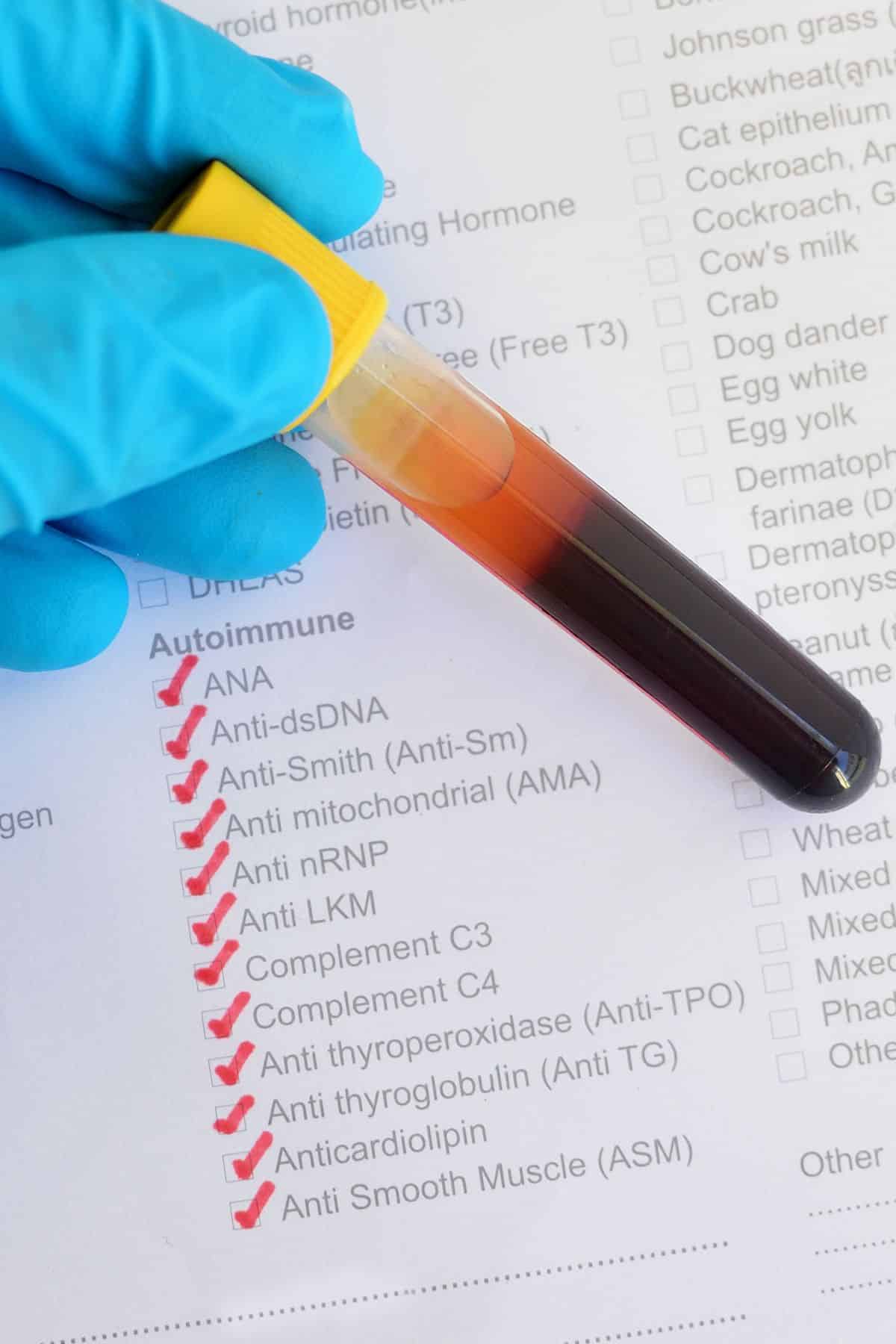
Overview of Autoimmune Disease
Our immune systems are designed to protect us from infections by producing antibodies to combat harmful cells.
In cases of autoimmune disease, however, those antibodies begin attacking our own tissues and organs instead. This can lead to a range of symptoms, depending on what part of the body is affected.
Autoimmune diseases are quite common, affecting roughly 16% of Americans. Unfortunately, this figure seems to be on the rise.
It’s not completely clear what causes an autoimmune condition. In some cases, autoimmune disease symptoms run in families, or they may be triggered by environmental factors like pollution or other environmental toxins. Other possible causes include age, stress, certain medications, infection, and nutrition.
Women are more likely to get autoimmune diseases! Almost 80% of people with autoimmune diseases are female.
Our digestive health can play a part, too.
There have been a number of studies linking autoimmune disease to leaky gut syndrome, where the lining of the intestine or digestive tract is damaged and allows harmful bacteria into the bloodstream. This is also known as intestinal permeability.
See my related articles on the best leaky gut diet and the best gut healing foods.
AIP Diet for Beginners
The autoimmune protocol diet (known as the AIP diet) is a version of the Paleo diet developed by Loren Cordain, Ph.D. He discovered that certain foods can be linked to inflammation in people with autoimmune diseases, worsening their symptoms.
See my article on a Paleo Diet for Beginners to learn more about a paleo approach.
The main idea behind the paleo diet and AIP protocols is to focus on vitamin-rich nutritious foods and avoid those that are associated with leaky gut syndrome. Ideally, this will lead to a reduction in inflammation in the body, helping relieve the pain and discomfort it causes.
The diet works in phases.
In the first phase – known as the elimination phase – you need to remove all potentially troublesome foods from your diet. These are the types of foods believed to either cause inflammation in the gut, an imbalance of gut bacteria, or a response by the immune system.
See below for a list of foods to avoid on AIP.
This can be quite daunting, as the list of foods to avoid is pretty comprehensive and the diet is restrictive. But adhering to it closely can bring rapid relief of symptoms, making the effort more than worthwhile.
Once symptoms have noticeably eased, you move on to phase two of the diet – the reintroduction phase. During this phase, you slowly reintroduce the “banned” foods back into your diet, one at a time. This should help you identify which foods are triggering your symptoms so that you can avoid them in the future.
The reintroduction phase can be quite long and it is important to take things gradually. When you pick the first food to reintroduce, you should only eat a very small amount – around a teaspoon or so – then wait for 15 minutes to see if your symptoms return. If they do, then you will know this is a food you need to avoid.
If they don’t, then eat a tablespoon or two of the food and monitor your symptoms over the course of a few hours. If they still don’t return, you can try eating a normal amount of the food. You should then wait for 5 days without trying the food again, or introducing any other new foods.
If you’re still symptom-free at the end of this time, then you can regularly include that food in your diet going forward.
After that, it’s time to repeat the entire process with another new food.
To make this technique successful, it is recommended that you try new foods in a certain order. With dairy, for example, foods with the least amount of lactose are the least likely to worsen your symptoms. So try things like ghee before regular butter or milk.
You should also avoid reintroducing new foods at times when other factors like infection, injury, stress, and poor sleep could cause inflammation in your body. This could make it hard to identify whether any return of symptoms is due to the new food, or these other sources of inflammation.
The final phase is the maintenance phase, where you create a customized diet plan focused on improving your gut health.
At the end of the entire process, you should know which foods act as triggers for you so that you can avoid them. But you will also know which foods are safe, allowing you to enjoy the most variety in your diet possible.
What to Eat on AIP
The AIP diet is all about eating nutritious foods that help heal the gut and support your gut health. It is a restrictive and targeted elimination diet that is meant to help reduce symptoms of autoimmune disease.
The diet should be followed under the care of a healthcare professional who can help monitor your progress and make sure that you aren’t becoming nutrient-deficient due to the restrictive nature of the AIP diet.
While you want to reduce symptoms of autoimmune diseases like joint pain, you don’t want to make your health condition worse by not eating enough nutrient-dense foods.
Foods generally allowed on AIP (but can be adapted to your individual needs):
- Small amounts of fresh fruit
- Fresh vegetables (except for nightshade vegetables like tomatoes, peppers, eggplants, and white potatoes. This is because they contain a chemical called solanine, which some people feel may trigger inflammation)
- Tubers (vegetables that grow underground). These include Jerusalem artichokes, yams, sweet potatoes, and taro
- Grass-fed or pasture-raised meat with minimal processing (including organ meats)
- Minimally processed wild-caught seafood and fish
- Moderate amounts of natural sweeteners, like honey and agave syrup
- Herbs and spices, none of which should come from a seed
- Probiotic foods like sauerkraut, pickles, kombucha, and dairy-free kefir
- High-quality oils with minimal processing, including coconut oil, olive oil, and avocado oil
- Black or green tea, but no more than 4 cups per day
- Homemade bone broth
Search online for an AIP shopping list or AIP meal plans to find more support for following the elimination phase of AIP.
What to Avoid on AIP
During the elimination phase, the following specific foods should be avoided altogether.
- Nightshade vegetables like peppers, tomatoes, eggplants, etc, and any spices that come from them. These include chili powder, cayenne pepper, crushed red pepper, and paprika
- Grains such as wheat, barley, rye, and oats, along with all the foods made from them. These include breakfast cereals, cakes, bread, and pasta. You should also avoid rice as it is considered a grain. See my related article on how to go grain-free.
- Legumes like peas, chickpeas, soybeans, and lentils, plus any foods made with them. Examples include peanut butter, hummus, tofu, and meat alternatives.
- Dairy foods, including milk, butter, cheese, and foods containing dairy ingredients. This also applies to dairy products made with sheep or goat’s milk
- Eggs or foods containing eggs
- Processed vegetable oils including canola, sunflower, grapeseed, and corn oils
- Spices from seeds, including cumin, coriander, fenugreek, and mustard.
- All nuts and seeds and any foods containing them, including flour, oils, and butter
- Food additives, including colorings, trans fats, thickeners, and emulsifiers
- Artificial sweeteners, including xylitol, aspartame, and mannitol
- Refined sugars like brown rice syrup, barley malt syrup, beet/cane sugar, and corn syrup, plus all foods containing them
- Coffee
- Alcohol
- Cocoa, chocolate, and cacao
Types of Autoimmune Disease
Autoimmune disorders and chronic inflammation can affect any organ in your body and many different types of tissues.
The most common are:
- Inflammatory bowel disease (IBD) – this term usually describes two conditions, ulcerative colitis and Crohn’s disease
- Hashimoto’s thyroiditis which affects the thyroid
- Celiac disease – an immune reaction to gluten
- Rheumatoid arthritis
- Psoriasis
- Type 1 diabetes, which arises when the pancreas does not produce enough insulin
- Grave’s disease, which affects the thyroid gland
- Multiple sclerosis
- Lupus – this can attack multiple parts of the body, including your skin, joints, kidneys, lungs, heart, and muscles.
Symptoms
The symptoms of autoimmune disorders are caused by inflammation and can vary widely from person to person. They largely depend on the area of the body affected.
If your antibodies are attacking your skin, for example, you can experience blisters or rashes.
If your joints are affected, then inflammation will make them feel stiff or painful, sometimes to the point of limiting movement.
Autoimmune diseases involving the thyroid can cause changes to your weight, fatigue, and achy muscles.
Symptom of autoimmune disease may not be consistent and may fluctuate over time.
See my related article on Symptoms of a Hashimoto’s Flare-Up.
FAQs
The good news is that the restrictive first phase isn’t necessarily a lifelong diet.
Instead, you only need to follow it until your symptoms are considerably reduced. The exact length of time will vary from one person to another, with the average being around 30 to 90 days. If you are lucky you may notice a big reduction in symptoms in as little as 21 days.
The eliminated foods can then be gradually reintroduced. If any trigger symptoms, then you will know to avoid them. However, there is always the chance that you may be able to tolerate these foods in the future. So it’s worth trying out the reintroduction process from time to time to see if this is the case.
As yet, there isn’t a huge amount of scientific evidence proving that the AIP diet is effective. But the few studies that have been carried out are promising, with one showing positive results for a group of 16 women with Hashimoto’s thyroiditis and another improving the symptoms for people with inflammatory bowel disease.
There’s quite a bit of anecdotal evidence, too, and many people who have tried the diet feel that it not only relieves their symptoms but also promotes their overall feeling of well-being. So even if the diet can’t completely cure your autoimmune disease, it can certainly help you to manage it.
You may lose weight on an AIP diet plan, but that is not the point. The autoimmune paleo diet is intended to reduce autoimmune symptoms by reducing the intake of inflammatory foods.
More Health Resources You Might Like
Conclusions
Autoimmune disorders are not easy to live with and often bring distressing symptoms. While the AIP diet might be overwhelming at first glance, it’s helpful to remind yourself that the first, restrictive stage is only temporary. What’s more, the benefits – once you’ve identified your problem foods – can be huge, vastly improving your quality of life.
It’s also comforting to know that you can take control of your symptoms by doing little more than avoiding certain foods while enjoying those that support your overall good health.
Don’t forget to join my newsletter list to get exclusive clean eating recipes and tips. The newsletter is 100% free with no spam; unsubscribe anytime.
About the Author: Carrie Forrest has a master’s degree in public health with a specialty in nutrition and is a certified holistic nutritionist. She is a top wellness and food blogger with over 5 million annual visitors to her site. Carrie has an incredible story of recovery from chronic illness and is passionate about helping other women transform their health. Send her a message through her contact form.
Note: this post is for informational purposes only and is not intended as medical advice. Please consult your healthcare provider for recommendations related to your individual situation.


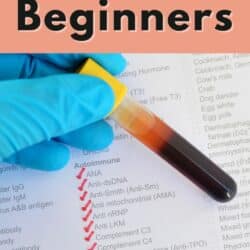



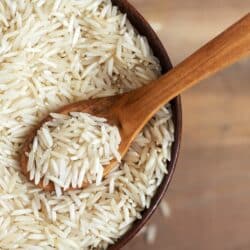



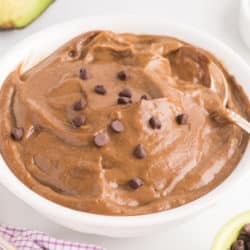

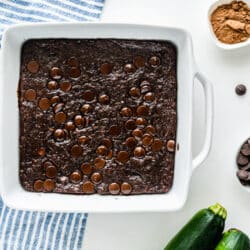








Hello Carrie
I’m revisiting this article as I only quickly browsed over it originally.
I can’t seem to find where you suggested a particular vitamin to have late afternoon to help reduce sugar cravings. Can you help me out here?
Hi Kerry, I think this article might be the one you are looking for: https://www.cleaneatingkitchen.com/sugar-detox-tips-sugar-free/